|
Lifechanyuan: A University for Soul Cultivators
Written by Jiejing Celestial|November 5, 2025, Lifechanyuan Second Home, Thailand Branch
Edited by Xinzhoucao
In the spring of 2023, I arrived at Lifechanyuan Second Home—the Thailand branch—carrying a body marked by old wounds. My luggage held a doctor’s advice, the traces of eleven minimally invasive surgeries, nights that required medication to sleep, a weight that felt almost unbearable, a broken marriage, and the unplaceable grief of losing both parents. I thought I was escaping. Only later did I realize: I hadn’t entered a refuge—I had stepped into a university without podiums, where daily life itself became the curriculum, and soil, sweat, and human shadows became my teachers.
I remember the air that first morning, scented with mango blossoms. The sunlight was like a gentle blade, slicing through the fog of my past. Each memory felt like a freshly uprooted weed—painful, yet luminous. Every silent moment shared with another was like a glimmer in the night, slowly illuminating the rooms of my heart.
Over these two years, I’ve come to understand: I’m not “living life”—I’m “attending school.”
This isn’t a place that teaches knowledge; it’s a university that studies the soul—Lifechanyuan. There are no timetables, no classrooms, no one lecturing from a stage. Yet every person, every event, every emotion is a required course. I didn’t come here for a diploma—I came to refine my heart, cultivate my nature, and learn love and the Tao.
From my first encounter with Lifechanyuan in 2011 to now, after more than two years living at the Thailand branch, I finally see clearly: Lifechanyuan doesn’t belong to any religion, yet it carries the deepest spiritual education. It doesn’t issue graduation certificates, yet it has repeatedly ushered me into a more authentic version of myself.
Lessons in Everyday Life
At Lifechanyuan, this university for the soul, lessons aren’t written on a syllabus—they’re hidden in the fabric of daily life. There are no teachers standing at a podium, yet every person and every event becomes my textbook. Here are the core courses I’m currently studying:
Lesson One: Emotional Alchemy
At Lifechanyuan, I’ve learned not to run from anger, fear, or sorrow—but to gently approach them. In the past, I was trapped in illness and insomnia, my emotions storming like thunderclouds. Only when I began practicing “emotional alchemy” did I realize: fiery emotions aren’t enemies—they’re messengers of the soul.
Science quietly affirms this: when I suppress emotions, my body releases stress hormones, like a sleepless night stretching endlessly. But when I witness and express emotions with tenderness, the parasympathetic nervous system flows like spring water, bringing restoration and peace.
Now, when misunderstanding arises, I no longer rush to defend myself. Instead, I ask: “Why does this matter so much to me?” In that moment, the flame doesn’t destroy—it transforms into a beam of light, revealing the cracks and growth within me.
Practice Case: Physical Cultivation in the Mango Garden
Soon after arriving at the Thailand branch, I was assigned to cut grass in the mango garden—six hours a day, under the blazing sun, surrounded by soil. At first, I resisted, thinking this was mere labor, not spiritual cultivation. But through each repetitive stroke, I began to hear the whispers of the grass, smell the breath of the earth, and feel the rhythm of my body.
Three months later, my weight naturally dropped from 95 kg to 65 kg—not as a result of dieting, but of release. I released obsession, released hostility, and released the part of me that clung tightly to control.
Research shows that during physical labor, the brain secretes dopamine and oxytocin—like inner spring rain, nourishing emotions and a sense of belonging. In that moment, I understood: spiritual practice doesn’t happen at a desk—it happens crouched on the earth. Sweat is prayer. Soil is teacher.
Tempering Fire into a Gentle Flame
I once believed emotions were punishments imposed by the outside world—until I learned to pause, observe, and express in the midst of conflict. Laboring in the mango garden quietly laid out a path of inner refinement, showing me that anger can be transformed into light, and pain can be tempered into a gentle flame. That flame no longer scorches others—it illuminates my own vulnerability.
Psychologist Carl Jung once said: "Authentic wholeness arises from tenderly meeting the shadow within." Neuroscience echoes this softly: when I choose to pause during emotional surges, the prefrontal cortex helps me respond with greater clarity.
I’ve come to understand: true spiritual cultivation is not about suppressing emotions, but about gently accompanying them—until they transmute into compassion and strength. Like a candle in the night, not dazzling, yet bright enough to light a heart in transformation.
Lesson Two: Gentleness and Centering
Staying rooted in strong energies, without being scattered by the wind
This lesson taught me: gentleness is not weakness—it is a steady form of strength.
I began practicing how to respond with softness even in the face of hostility, and how to hold my boundaries in moments of conflict.
I am no longer the “lightning” of emotion—flashing and vanishing in an instant. Instead, I am learning to become a “candle flame”—warm, steady, and not easily extinguished by the wind.
My goal is to become a “little sun”: radiating light from within, and warming others along the way.
Practice Case: From Combat to Candlelight
In the past, I was hot-tempered and rigid. Having trained in Taekwondo, I was used to responding to conflict with “combat.” Having endured emotional wounds, I once viewed men as “useless,” falling into the mindset of extreme feminism. At Lifechanyuan Second Home Thailand Branch, I began cultivating "gentleness and centering." I practiced staying grounded in strong energies, and holding boundaries without aggression. I began to appreciate masculine strength, and allowed myself to cry, to be vulnerable, to soften. In the natural atmosphere of the Second Home, I learned to live in harmony—with people, with plants, and with animals. I began to understand: to harm any living being is to harm myself.
Psychologist Carl Rogers once said, “True strength comes from gentleness.” That sentence was like a drop of water falling onto the rock of my heart—slowly seeping in, slowly transforming me.
Lesson Three: Flow and Trust
Not a reward from the Tao, but an echo of LIFE.
This lesson taught me: when plans fall apart or things are delayed, I no longer feel anxious. Instead, I gently say, "Perhaps this is the rhythm of LIFE."
I’ve come to believe: delay is a form of teaching, and chaos is a kind of arrangement.
Flow is not a reward from the Tao—it is LIFE’s natural response to my inner peace.
I used to be someone with a strong need for control. When my visa was delayed or plans were disrupted, I would become restless, sleepless, angry—as if everything were working against me.
Only when I began practicing “flow and trust” did I slowly realize: LIFE is not something to be arranged—it is something that responds.
The Tao is not a conscious manipulator, but like water, like wind—a natural rhythm.
When I am calm, aware, and compassionate—without clinging to outcomes—life begins to flow. Connections arise naturally, not as rewards, but as a resonance of aligned frequencies.
This mirrors the “principle of resonance” in quantum physics: when two systems share the same frequency, they naturally connect.
I began to understand: it’s not the Tao “rewarding” me—it’s me harmonizing with LIFE itself.
Practice Case: The Visa Renewal as a Training Ground
In October 2025, I needed to renew my student visa. I thought it would be a simple process, but it was repeatedly delayed, and the costs kept rising. I felt anxious, doubtful, and at one point even considered giving up—believing I wasn’t worthy of staying at the Second Home.But I didn’t run away. I began to pray, to repent, and to observe my desire for control. I discovered: the more I tried to control the outcome, the more reality spun out of control; the more I wanted things resolved quickly, the more LIFE slowed me down.
So I practiced flowing with life: completing the steps I could, and surrendering the rest to the rhythm. Eventually, the visa was successfully renewed. But I knew the true achievement wasn’t the visa—it was the transformation within me.
For the first time, I truly experienced: the Tao is not a planner—it is a responder. When I released my attachment to outcomes, the external obstacles began to soften. That period of waiting was like stones being rearranged in a riverbed—teaching me to trust LIFE’s echo.
Lesson Five: Interpersonal Reflection
From blame to mirror, from enemy to fellow traveler
This lesson taught me: others are not the source of my suffering—they are reflections of the places within me that have yet to heal.
In the past, I often blamed others—“They made me angry,” “They hurt me.”
Only when I began practicing “interpersonal reflection” did I slowly see: every person who made me uncomfortable was a projection of some corner of my soul.
I stopped pointing the finger outward, and began turning inward.
This lesson shifted me from “victim” to “witness,” from blaming others to seeing myself.
Psychology calls this the “projection mechanism”: we tend to project the parts of ourselves we cannot accept onto others.
Only when I begin to reclaim those projections can true growth occur.
Relationships are no longer battlegrounds—they become mirrors for spiritual practice.
Practice Case: The Mirror Exercise
During collective cultivation at the Thailand branch, I sometimes experienced friction with other members. In the past, I would immediately blame the other person—“He was disrespectful,” “She provoked me,” “They caused my pain.” But this time, I chose to pause. I sat alone, quietly turning inward. I traced each triggered thought and emotion, like lighting a small lamp in the dark—revealing wounds I hadn’t noticed before. One long-standing conflict with a close member helped me see: I had lingered in the role of “the victim” for so long, I had forgotten to look back at myself.
I began to understand: the thorns in others are often shadows of my own unhealed places. When I was willing to admit that what I saw was a part of myself I hadn’t yet accepted, the relationship began to shift. We stopped blaming each other and began to see one another as mirrors—repairing, together. In that moment, I was no longer alone—because I had begun to reconcile with myself, and to see the light in the other.
Lesson Six: Creation and Responsibility
Not a passive recipient, but a weaver of reality
This lesson taught me: I am not passively enduring life—I am a co-creator within it.
When I encounter a painful outcome, I no longer rush to blame the outside world. Instead, I gently ask myself: "Could this be a reflection of my inner beliefs?"
I began to realize: every emotion, every choice, is part of the “thesis” I am writing. Not for anyone else to grade—but to become a more authentic version of myself.
Practice Case: From Labor to Creation
In the past, I believed work was merely a way to earn money.
I worked tirelessly in foreign trade companies, English institutions, and customer service roles—yet always felt a deep emptiness. It was as if I were completing assignments given by others, without ever seeing my own handwriting on the page.
Only when I began practicing “creation and responsibility” did I slowly realize: I wasn’t just executing tasks—I was participating in the weaving of LIFE.
At the Thailand branch, I took part in cutting grass, planting flowers and vegetables, cleaning, and sharing our philosophy. These were no longer chores—they became acts of creation:
Each stroke of the sickle cleared away inner clutter.
Each flower planted sowed seeds of hope.
Each translation and sharing brought our values to more people.
I began to feel a sense of accomplishment, meaning, and belonging.
I was no longer a “patient”—I had become a “useful person.”
Research shows that when people engage in meaningful labor, the brain releases dopamine and oxytocin—“happiness hormones” that boost immunity, ease anxiety, and increase vitality.
I experienced this firsthand: creation is the most powerful form of healing. It not only restored my body—it reawakened my connection with the world.
Milestone: Spiritual Ecstasy
I used to think that “spiritual ecstasy” was a distant, mysterious experience—perhaps reserved only for advanced practitioners. Until one day, during a moment of deep intimacy, my body began to tremble—not with fleeting pleasure, but with waves of convulsions and spasms that lasted long and felt filled with joy and delight. It was as if my body were singing, and my soul responding. There was no fear—only gratitude, as if the entire universe were flowing through me.
What shocked me even more was that this experience wasn’t limited to intimate encounters. Sometimes, when I sit quietly alone, pray, or spend time with myself late at night, it arrives softly. My body begins to tremble gently, my breath deepens, and a wordless joy and sense of belonging rises within. I finally understood: spiritual ecstasy is not an extension of sexual climax—it is a deeper integration. A moment when body, emotion, awareness, and belief align—and LIFE emits its own light.
Scientific research has begun to explore the neurological mechanisms behind this phenomenon. During sexual climax, the brain releases dopamine, oxytocin, and prolactin—bringing pleasure and a sense of connection. Spiritual ecstasy, however, may involve broader neural synchrony, especially in regions related to emotion, meaning, and compassion. Psychologist Abraham Maslow called this a “peak experience”—a state of deep awakening that arises from inner integration and a sense of safety.
Studies also show that during such profound pleasurable experiences, stress hormones drop significantly, immunity strengthens, and inflammation decreases. Cognitively, people report a heightened sense of meaning, and reduced likelihood of depressive or anxious relapse. Spiritual ecstasy is not only a gift of the soul—it is also a healing of the body.
I’ve come to believe that what Guide Xuefeng calls “Heaven’s existence” is not a distant belief, but a truth that can be felt in the body. I’ve experienced it—not in temples, not in rituals, but in the most ordinary, most intimate moments: When I stop controlling and begin trusting; When I stop avoiding and begin accompanying; When I stop blaming and begin looking inward.
Spiritual ecstasy is not ascension—it is embodiment. Not mystery—but the resonance of body and soul. It has no fireworks, but it has light. No miracles, but it is real. It tells me: I am walking the path home.
Closing Reflection: Still Practicing, Already Passing
At Lifechanyuan, there is no failing—only continued cultivation.
Every stumble is a chapter in progress.
Every moment of awareness is a step forward in the soul’s evolution.
I no longer chase perfection—I practice authenticity:
Breathing in truth, transforming through truth, walking forward in truth.
Now, after more than two years living at Lifechanyuan Second Home Thailand Branch, my weight, sleep, and health have quietly returned to balance. But the deeper transformation is this: I’ve learned to practice in the ordinary.
To treat sweat as prayer,
conflict as curriculum,
labor as ritual.
What Lifechanyuan has taught me is not to escape pain, nor to seek ultimate answers— but to turn gently inward each day: to witness my emotions, to take responsibility for my choices.
These practices are like gentle lamps, slowly tempered over time— not dazzling, but bright enough to light the path ahead.
I am still practicing, but I am already passing.
Not because I’ve completed something, but because I choose to keep walking— with gentleness and resolve, with light and truth, becoming that self-aligned little sun: radiating from within, and warming others along the way.
About the Author: Jiejing Celestial
Born in 1989 in Huai’an, Jiangsu Province, China, Jiejing Celestial once worked in foreign trade, education, and customer service. Her life was deeply marked by depression, severe insomnia, and a painful struggle with plasma cell mastitis. After undergoing eleven minimally invasive surgeries on her chest, doctors advised a double mastectomy. Her weight reached 95 kilograms, both parents had passed away, her marriage had collapsed, and she was on the verge of emotional breakdown. Had she not returned to Lifechanyuan—had she not encountered Guide Xuefeng and the Second Home—she might have spent her final years alone in a psychiatric hospital.Since entering Lifechanyuan International Family Society Thailand Branch in April 2023, she has gradually rebuilt her body and soul through the nourishment of nature and Lifechanyuan Values. Her weight naturally returned to 60 kilograms, her emotions stabilized, her illness eased, and her spirit was reborn.With gentleness and resolve, she continues to meet life’s questions with grace. At Lifechanyuan—a university for soul cultivation—she walks the path of awakening and healing.
|
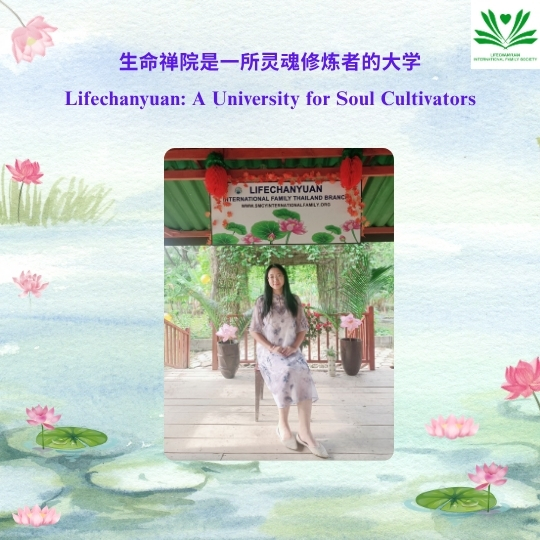 Lifechanyuan: A University for Soul Cultivators
Written by Jiejing Celestial|N
Lifechanyuan: A University for Soul Cultivators
Written by Jiejing Celestial|N
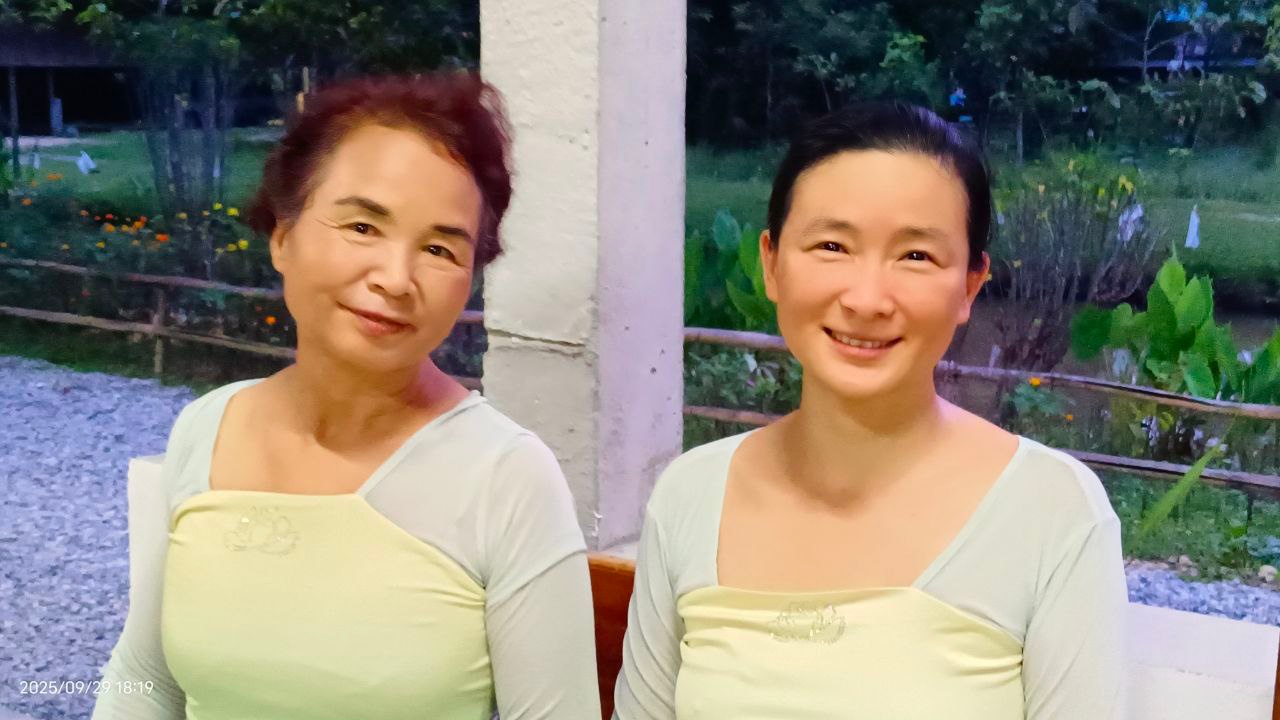 Massimo Introvigne, Editor of Bitter Winter, Published the Sixth Article about L
Massimo Introvigne, Editor of Bitter Winter, Published the Sixth Article about L
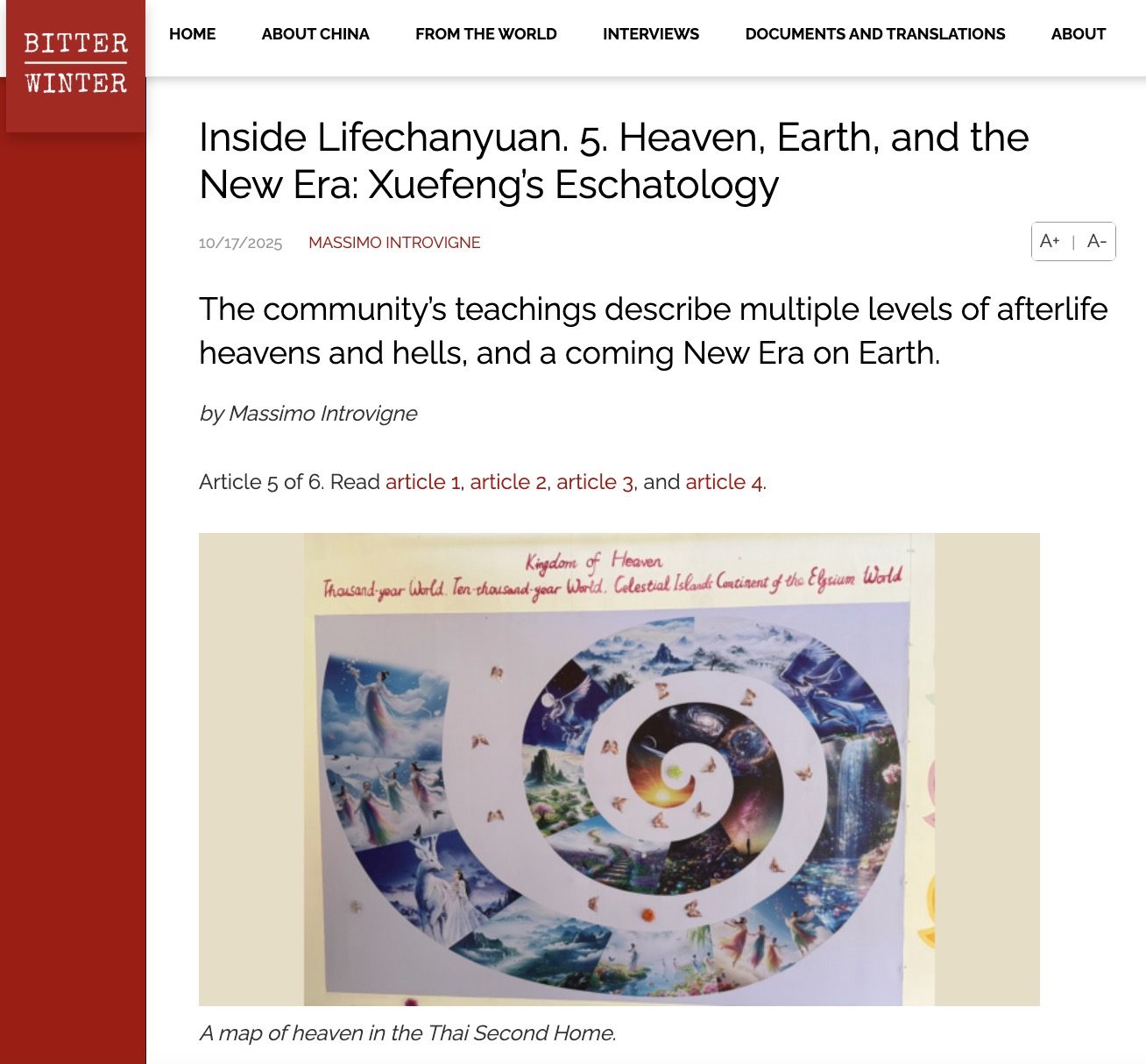 Massimo Introvigne, Editor of Bitter Winter, Published the Fifth Article about L
Massimo Introvigne, Editor of Bitter Winter, Published the Fifth Article about L
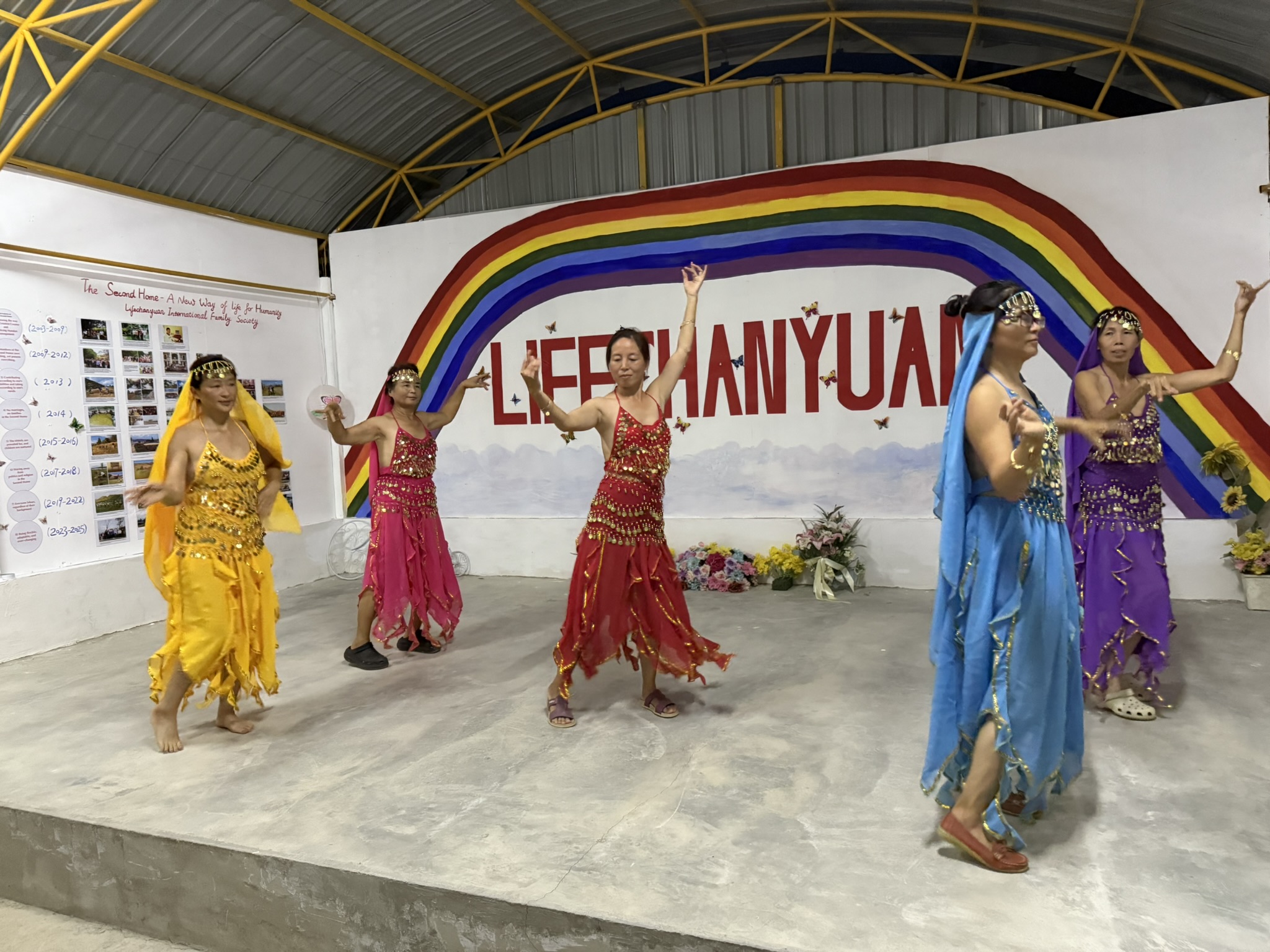 Massimo Introvigne, Editor of Bitter Winter, Published the Fourth Article about
Massimo Introvigne, Editor of Bitter Winter, Published the Fourth Article about
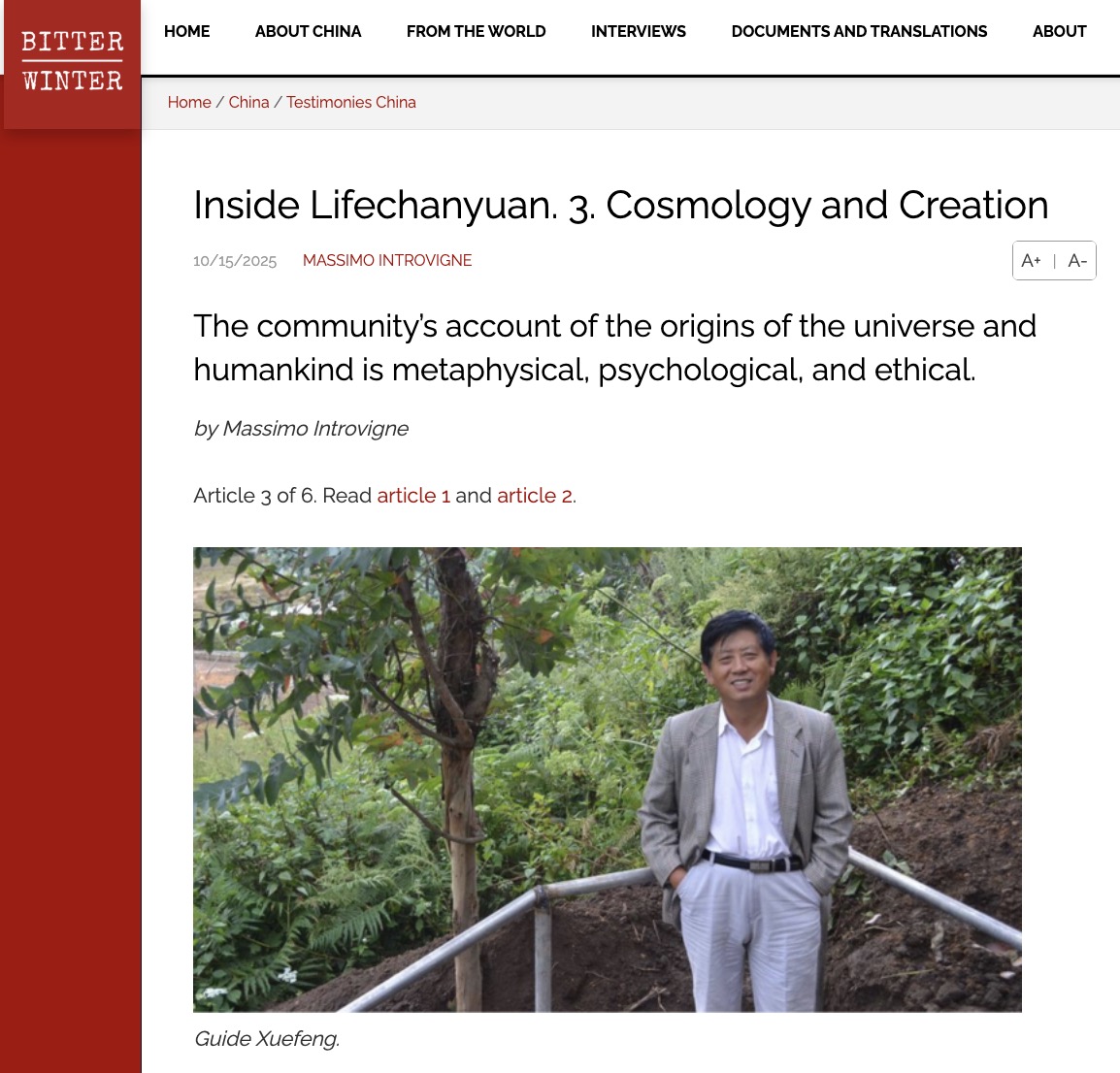 Massimo Introvigne, Editor of Bitter Winter, Published the Third Article about L
Massimo Introvigne, Editor of Bitter Winter, Published the Third Article about L
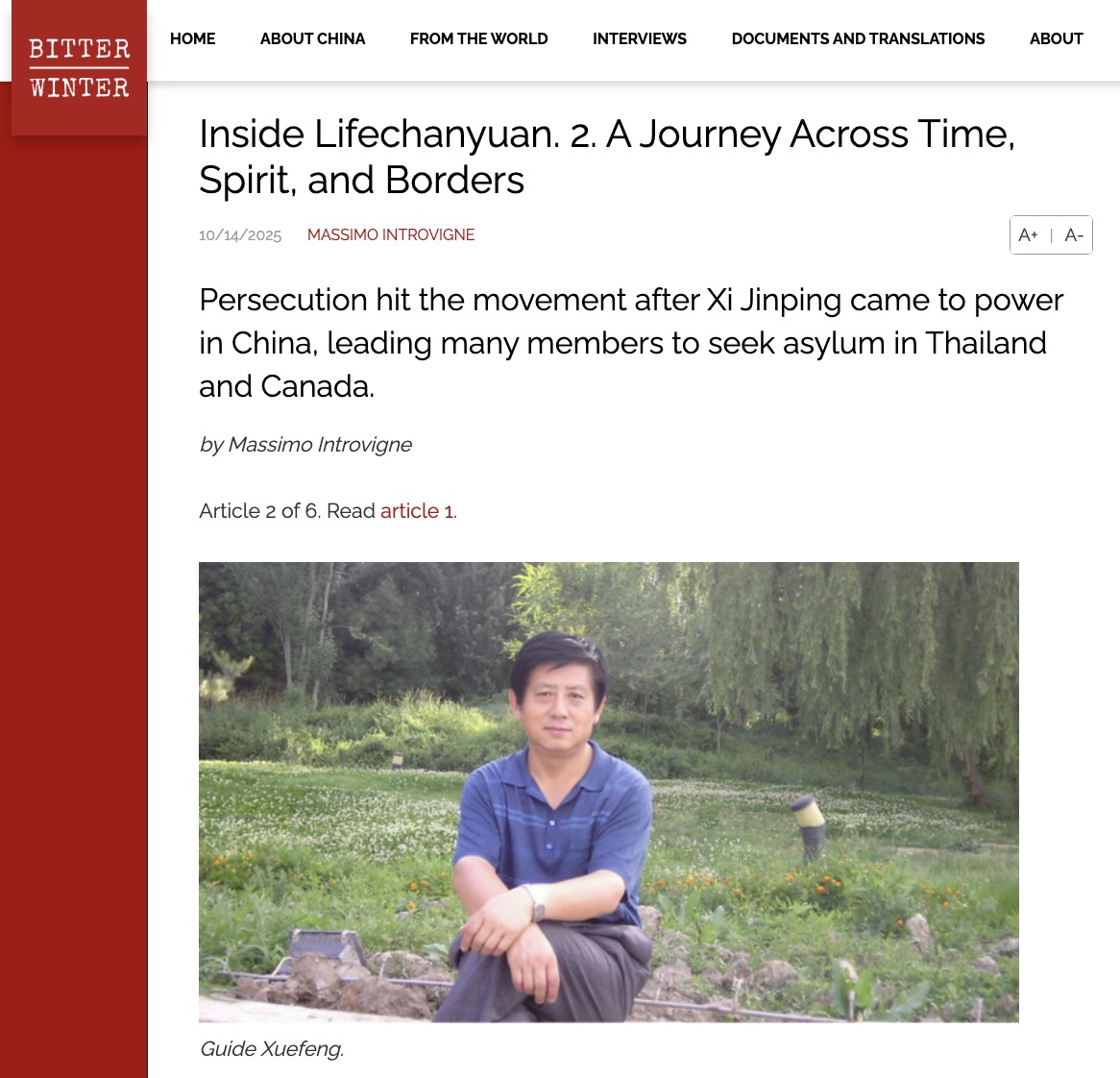 Massimo Introvigne, Editor of Bitter Winter, Published the Second Article about
Massimo Introvigne, Editor of Bitter Winter, Published the Second Article about


 Post time 2025-11-16 11:08:13
Post time 2025-11-16 11:08:13



